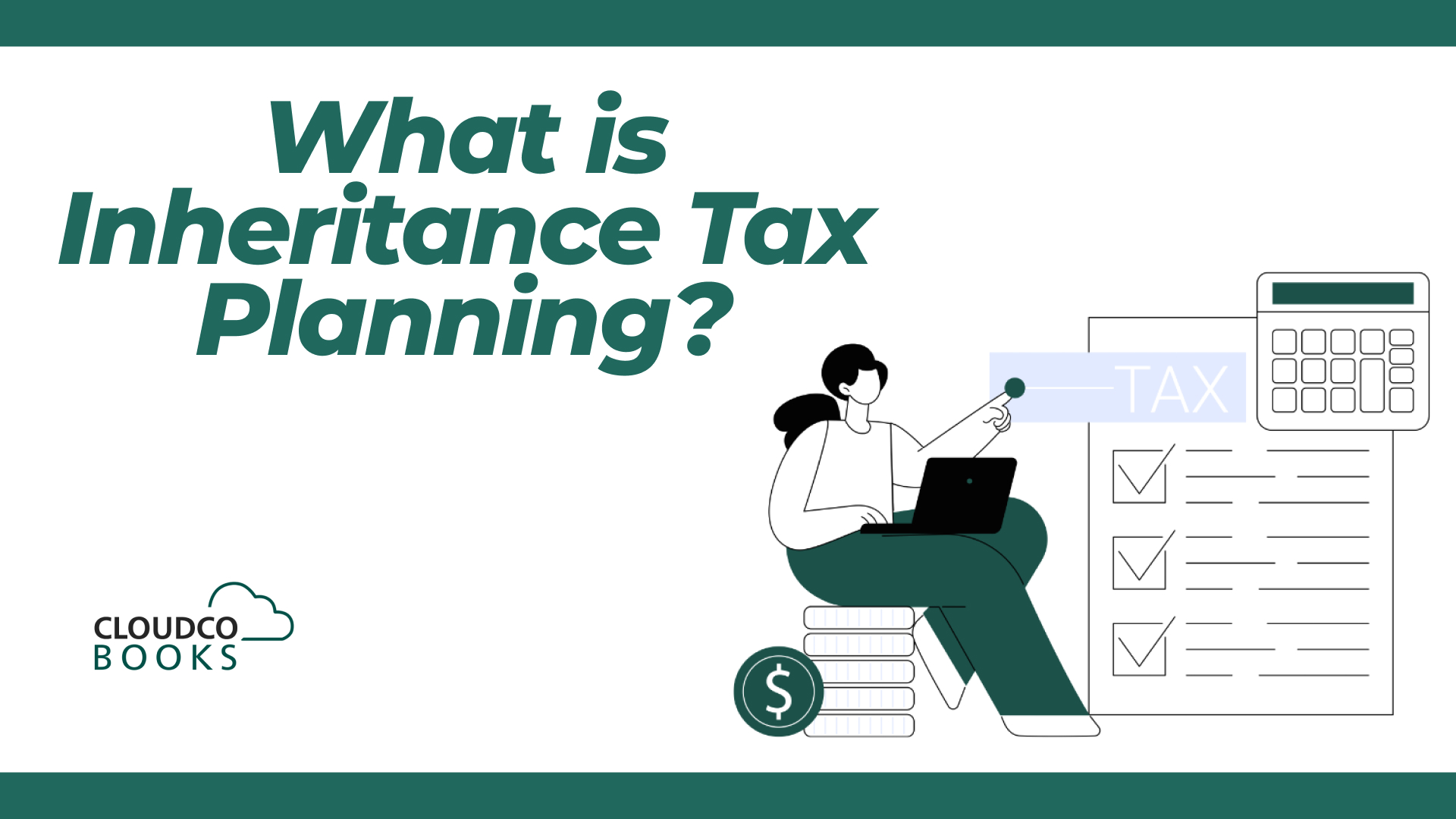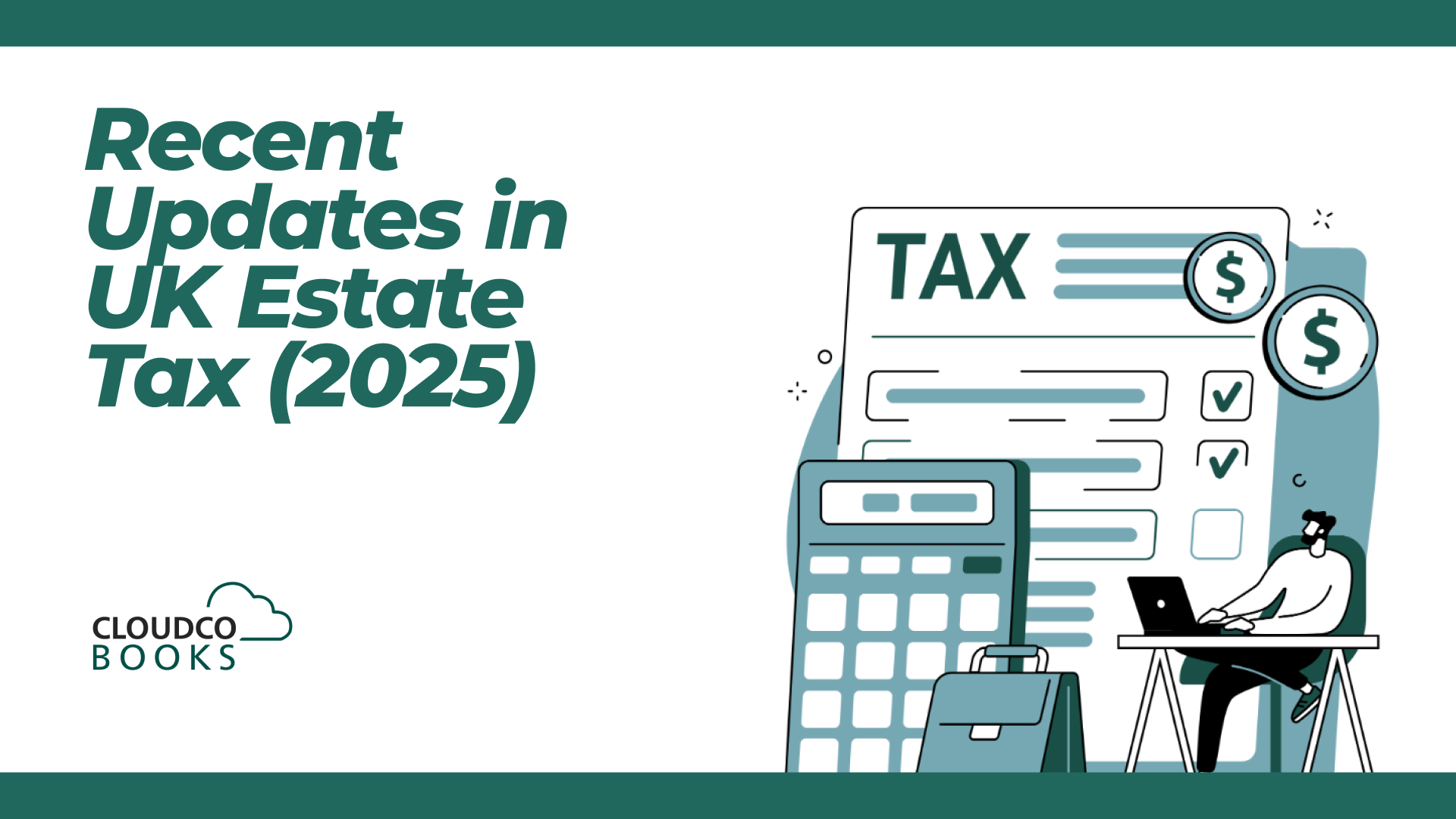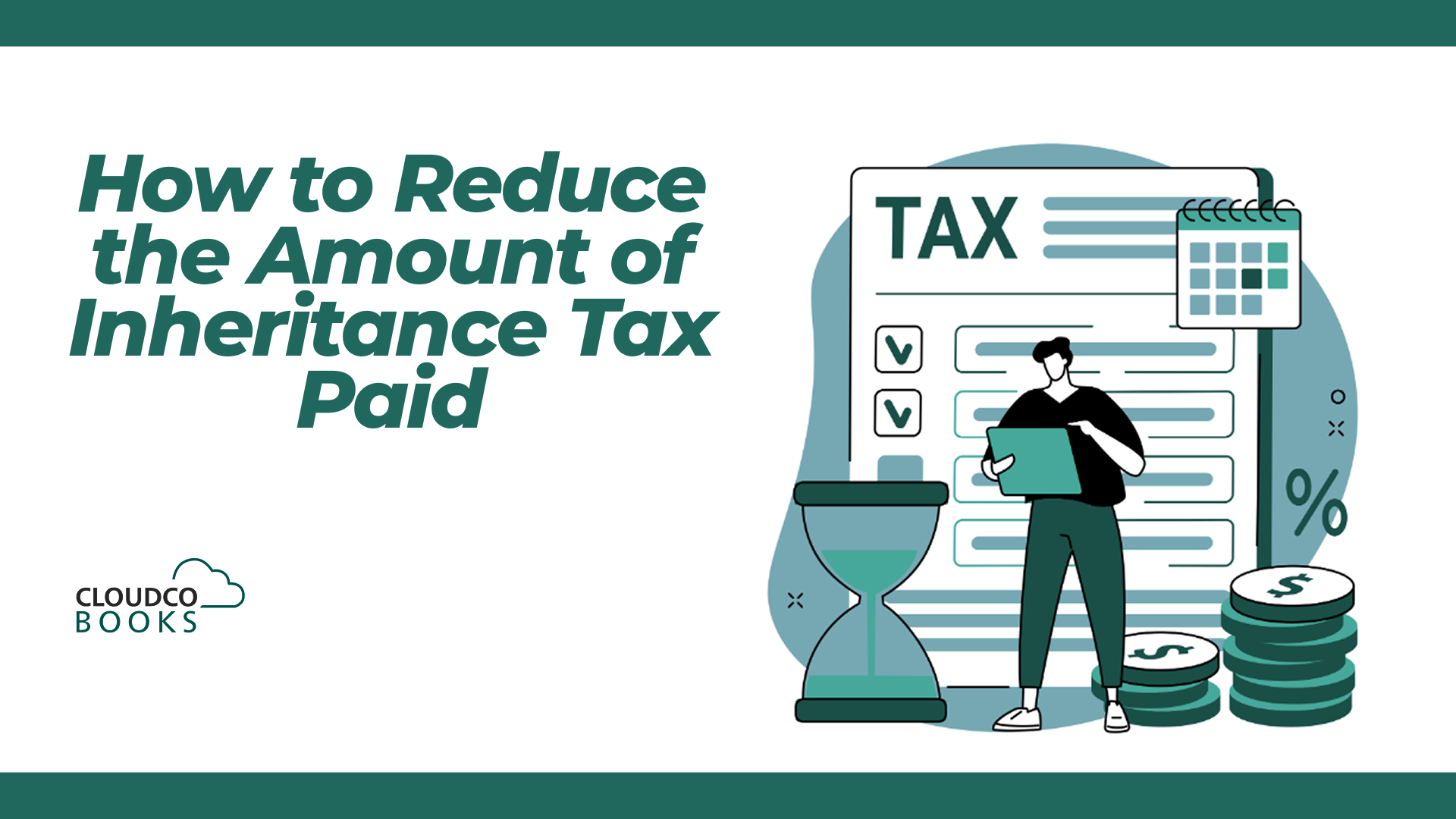Inheritance tax (IHT) is one of the UK’s most misunderstood taxes. Many families assume it only applies to the very wealthy, but rising property values mean more estates are now affected. Without proper planning, your loved ones may face large tax bills that could have been avoided.
This guide explains how inheritance tax works, who pays it, and the latest UK rules. You’ll also learn proven strategies to reduce your IHT liability and why seeking professional advice from firms like CloudCo Books makes planning easier.
What is Inheritance Tax Planning?
Inheritance tax planning is the process of arranging your finances, assets, and estate in a way that minimises the amount of inheritance tax (IHT) that might be due when you pass away.
In the UK, inheritance tax is usually charged at 40% on the part of your estate above the tax-free threshold (the nil-rate band, currently £325,000). With rising property values, more families are now affected.
In simple terms:
- Without planning: Your estate could face a large tax bill, meaning your family inherits less.
- With planning: You use legal allowances, exemptions, gifts, and trusts to reduce or even eliminate the tax owed.
Why Inheritance Tax Planning Matters?

Inheritance tax is charged at 40% on the portion of your estate above the nil-rate band (£325,000). For many families, that means tens of thousands of pounds lost unnecessarily.
Inheritance tax planning matters because:
- It protects your loved ones from unexpected tax bills.
- It ensures your assets are passed on as you intend.
- It reduces stress and delays for your beneficiaries.
Imagine leaving behind a £600,000 estate with no plan. Your family could lose £110,000 to HMRC. With planning, much of this could be avoided.
In the UK, inheritance tax (IHT) is usually charged at 40% on the value of your estate above the tax-free threshold.
Current key figures (2025):
- Nil-rate band (NRB): £325,000 per person (frozen until April 2028).
- Residence nil-rate band (RNRB): An extra £175,000 allowance when leaving your home to children or grandchildren.
- Spouse/civil partner exemption: No IHT is due on assets left to a spouse or civil partner.
- Charity exemption: Gifts to charities are tax-free, and leaving 10% of your estate to charity reduces the IHT rate from 40% to 36%.
Who Pays Inheritance Tax in the UK?
The responsibility for paying inheritance tax lies with the estate, not the beneficiaries.
The executor of the will or the administrator (if no will exists) is responsible for:
- Valuing the estate.
- Completing tax forms.
- Paying the tax from estate funds.
Only once the tax is settled will beneficiaries receive their inheritance.
Recent Updates in UK Inheritance Tax (2024–25)

The UK government has made no drastic changes to inheritance tax in 2024–25, but several points are worth noting:
- Nil-rate band (NRB): Frozen at £325,000 until April 2028.
- Residence nil-rate band (RNRB): An additional £175,000 allowance when passing your home to children or grandchildren.
- Charitable legacies: Leaving at least 10% of your estate to charity lowers the tax rate from 40% to 36%.
- Annual gift allowance: Remains £3,000 per year.
These rules highlight the importance of regularly reviewing your estate to maximize tax efficiency.
Step-by-Step Guide to Effective Inheritance Tax Planning
Step 1: Value Your Estate
Start by calculating the total value of your estate. Include:
- Property
- Savings and investments
- Pensions (where applicable)
- Life insurance not held in trust
- Valuable possessions
Subtract any debts, such as mortgages or loans. This gives your taxable estate value.
Step 2: Make Use of Allowances
There are several allowances available:
- Nil-rate band: £325,000 per person.
- Residence nil-rate band: £175,000 when leaving your home to direct descendants.
- Spousal exemption: Transfers to a spouse or civil partner are usually exempt.
- Charitable exemption: Gifts to charities are IHT-free.
Together, these allowances can significantly reduce your liability.
Step 3: Lifetime Gifting
One of the simplest ways to reduce inheritance tax is to gift assets during your lifetime.
- Annual exemption: Up to £3,000 each year.
- Small gifts: Up to £250 per person per year.
- Wedding gifts: £5,000 for children, £2,500 for grandchildren.
- Potentially exempt transfers (PETs): Larger gifts are tax-free if you survive for 7 years.
This not only reduces your estate but allows you to see loved ones benefit while you’re alive.
Step 4: Set Up Trusts
Trusts can help you control how assets are distributed while reducing your taxable estate.
- Discretionary trusts: Give trustees flexibility over who benefits and when.
- Interest in possession trusts: Allow a beneficiary to receive income while preserving capital for future heirs.
Trusts are complex and may attract their own tax charges, so professional advice is essential.
Step 5: Write a Will
Having a valid will ensures your estate is distributed according to your wishes. Without one, intestacy laws apply, which can increase IHT liability and cause family disputes.
Your will should:
- Appoint an executor.
- Make full use of allowances.
- Ensure assets pass in a tax-efficient way.
Step 6: Consider Life Insurance
Life insurance can be used to cover anticipated inheritance tax bills. The key is to write the policy in trust so the payout goes directly to beneficiaries and isn’t counted as part of your estate.
Step 7: Review Your Plan Regularly
Inheritance tax laws change, and so do personal circumstances. Review your estate plan if you:
- Buy or sell property.
- Marry, divorce, or remarry.
- Experience significant financial changes.
Regular reviews help ensure your plan remains effective.
How to Reduce the Amount of Inheritance Tax Paid

Here are practical steps that work for many families:
- Use your NRB and RNRB fully.
- Make gifts within allowances.
- Transfer unused allowances from a deceased spouse.
- Leave at least 10% of your estate to charity.
- Use trusts strategically.
- Ensure life insurance is written in trust.
These strategies can save your heirs thousands of pounds.
Everyday Example: Why It Matters
Consider this scenario:
Sarah owns a home worth £400,000, savings of £100,000, and investments worth £50,000. Her total estate is £550,000.
- Without planning, her estate faces £90,000 in IHT.
- By using her RNRB, gifting £20,000 over several years, and leaving 10% to charity, she reduces her tax bill to just £30,000.
This simple example shows how effective planning protects families from unnecessary costs.
CloudCo Books: Making Inheritance Tax Planning Simple
Inheritance tax planning can feel overwhelming, especially when rules are constantly changing. That’s where CloudCo Books can help.
Our expert advisors provide:
- Tailored estate planning based on your circumstances.
- Tax-saving strategies to reduce IHT liability.
- End-to-end support so you don’t have to navigate HMRC paperwork alone.
With CloudCo Books, you gain peace of mind knowing your loved ones are financially protected.
Final Thoughts
Inheritance tax planning is about protecting your family, not just saving money. By taking steps now, valuing your estate, utilizing allowances, gifting wisely, establishing trusts, and writing a will, you can ensure that more of your hard-earned assets stay with your loved ones.
And if the process feels daunting, remember: CloudCo Books is here to make inheritance tax planning simple, effective, and stress-free.
